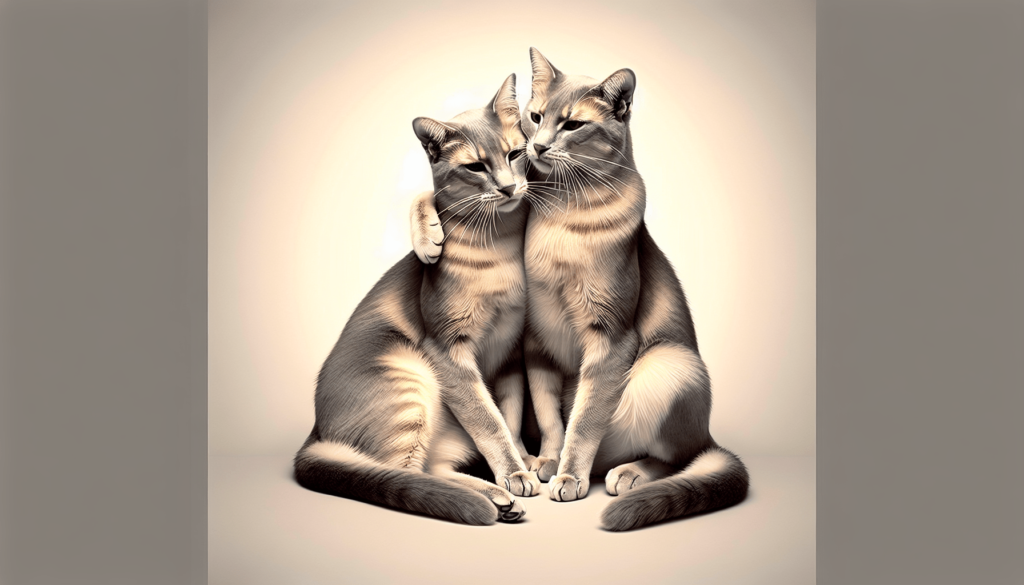Hey there! Have you ever wondered if cats can be gay? It’s an interesting and sometimes controversial topic that sparks a lot of curiosity among cat lovers and researchers alike. While there isn’t a definitive answer, studies have shown that same-sex behavior is actually quite common among animals, including our feline friends. So let’s explore the possibility of cats being gay and dive into this fascinating discussion together. Can Cats Be Gay
Have you ever wondered if cats can be gay?
Hey there! Have you ever observed your furry feline friend and wondered about their sexual orientation? Well, the topic of whether cats can be gay is a fascinating one that has sparked debate among researchers, veterinarians, and cat owners alike. In this article, we will delve into this question and explore the complexities of feline behavior and sexuality. So, can cats be gay? Let’s find out!
Understanding Feline Sexual Behavior
Let’s first understand the basics of feline sexual behavior. Cats are known to be solitary animals, and their mating rituals are usually brief and often aggressive. Contrary to popular belief, cats are not strictly monogamous animals – they can be promiscuous in their mating habits.
The Concept of Homosexuality in Animals
The concept of homosexuality in animals has been widely studied across various species, including mammals, birds, reptiles, and more. It is important to note that homosexuality in animals does not necessarily align with the human understanding of the term, as animals do not have the same cultural and social constructs as humans.

Can Cats Form Same-Sex Relationships?
One aspect of feline behavior that has intrigued researchers is the formation of same-sex relationships among cats. While cats are not known to engage in long-term, monogamous partnerships, they do form social bonds with other cats, regardless of gender. These relationships can range from friendly to aggressive, depending on the individual cats‘ personalities.
Instances of Same-Sex Behavior in Cats
In some cases, cat owners have reported observing instances of same-sex behavior in their feline companions. This behavior can manifest in various forms, such as grooming, playing, cuddling, and even mating rituals. While these behaviors may resemble mating or courtship rituals, they do not necessarily indicate sexual attraction.

Sexual Orientation vs. Behavioral Patterns
When discussing the concept of homosexuality in animals, it is essential to differentiate between sexual orientation and behavioral patterns. Sexual orientation refers to an individual’s sexual attraction to a particular gender, while behavioral patterns encompass a wide range of activities that may or may not have a sexual component.
Factors Influencing Feline Behavior
Several factors can influence feline behavior, including genetics, environment, socialization, and individual personality traits. These factors play a significant role in shaping a cat’s behavior and interactions with other animals, regardless of their sexual orientation.

The Influence of Genetics
Genetics can play a crucial role in determining feline behavior, including mating preferences and social interactions. While there is limited research on the genetic components of sexual orientation in cats, it is believed that genetic factors may influence certain behavioral traits associated with sexuality.
Environmental Factors and Socialization
Environmental factors, such as the presence of other animals in the household or exposure to different stimuli, can also impact feline behavior. Cats that are well-socialized from a young age are more likely to form positive relationships with other animals, regardless of their gender.

Individual Personality Traits
Just like humans, cats have unique personalities that shape their behavior and interactions with others. Some cats may be more sociable and outgoing, while others may be more reserved and independent. These personality traits can influence how cats interact with other animals, including their potential for forming same-sex relationships.
Debunking Myths About Feline Sexuality
There are several myths and misconceptions about feline sexuality that have circulated over the years. Let’s take a closer look at some of these myths and debunk them to gain a better understanding of cats’ sexual behavior.

Myth: Cats Engage in Homosexual Behavior for Pleasure
One common myth about feline sexuality is that cats engage in homosexual behavior solely for pleasure. While some animals may exhibit same-sex behavior as a form of social bonding or dominance display, it is not necessarily indicative of sexual attraction or pleasure.
Myth: Homosexual Behavior in Cats is Abnormal
Another misconception is that homosexual behavior in cats is abnormal or unnatural. In reality, same-sex behavior has been observed in numerous animal species, and it serves various purposes, including social bonding, dominance hierarchy establishment, and stress relief.
Myth: Cats Cannot Form Meaningful Same-Sex Relationships
Contrary to popular belief, cats can form meaningful relationships with other animals, regardless of their gender. These relationships may involve companionship, play, grooming, and mutual protection, similar to the social bonds formed between opposite-sex pairs of animals.
The Importance of Acceptance and Understanding
In conclusion, the question of whether cats can be gay is a complex and nuanced one that requires a deeper understanding of feline behavior and sexuality. While cats may exhibit same-sex behavior and form social bonds with other animals, it is essential to approach this topic with acceptance and understanding.
Embracing Diversity in Animal Kingdom
Just like humans, animals display a wide range of behaviors and interactions that reflect the diversity of the natural world. By embracing diversity in the animal kingdom and recognizing the complex nature of feline behavior, we can gain a deeper appreciation for the unique characteristics of our furry companions.
Conclusion
So, can cats be gay? The answer may not be straightforward, but what we do know is that cats, like humans and other animals, have a diverse range of behaviors and interactions that shape their relationships with others. By approaching this topic with an open mind and a willingness to learn, we can gain a better understanding of feline sexuality and behavior. Remember, love knows no boundaries, and acceptance is key when it comes to embracing the diversity of the animal kingdom.

